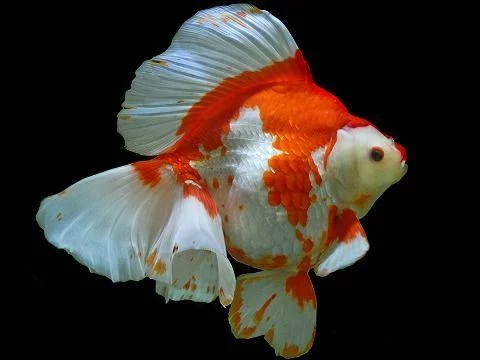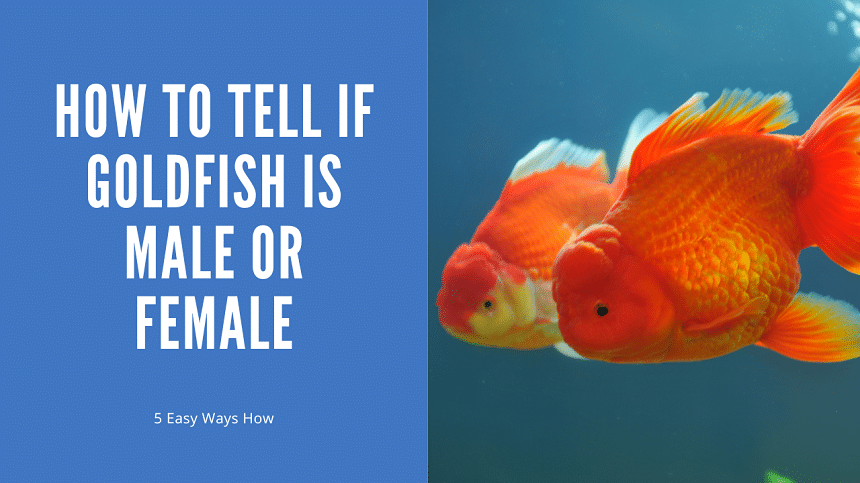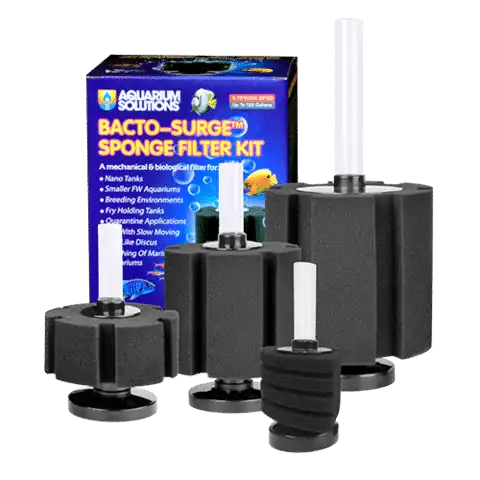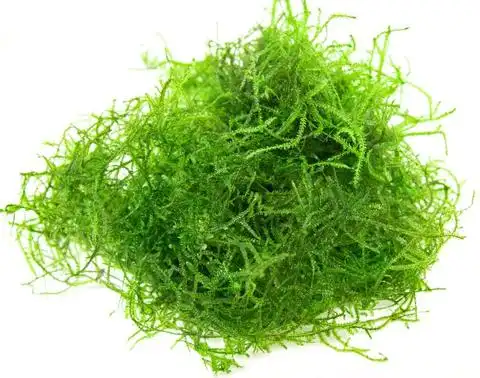Thank you for visiting! By the way… any links on this page that lead to products on Amazon and other stores/partners are affiliate links Aquarium Store Depot earns a commission if you make a purchase.
Goldfish have a long history of breeding. In fact, carefully selected male and female fish have been bred over hundreds of years to express the bright orange, red, yellow, and white metallics we know and love today. In the current trade, many hobbyists continue breeding these fish in their own home aquariums for the experience and to achieve the best physical expressions possible.
To breed these beautiful fish, you first need to be able how to tell if goldfish is male or female.
Key Takeaways
- Goldfish are relatively easy to breed, but their intense care requirements and large brood sizes should be considered before attempting to do so.
- Male fish are smaller yet brighter in coloration and may display breeding tubercles. Female goldfish may develop a noticeable vent and grow rounder in body shape but lack tubercles.
- Goldfish are egg scatterers that will eat their eggs once done with the spawning process. Because of this, they do best when bred in a separate tank with controlled settings.
Introduction To Goldfish
Goldfish are not a naturally-occurring fish. Goldfish, scientifically known as Carassius auratus, are largely domesticated forms of crucian carp (Carassius carassius). Over centuries, goldfish have been bred to express the brightest colors and to feature interesting ‘fancy’ body modifications, such as telescope eyes and unique tail fin shape. Each modification is considered a breed of Carassius auratus despite the many differences between each individual.
In the past, goldfish were bred for luck and fortune. Today, some of the rarest breeds of goldfish can also go for large amounts of money, like the Tosakin breed which can sell for several hundred dollars. However, most hobbyists breed their goldfish for the experience as they are relatively easy to breed. Goldfish populations can easily sustain themselves in outdoor ponds and lakes as long as conditions are met.
It should be noted that goldfish produce large broods and hobbyists can become overwhelmed with the number of goldfish they end up with. No matter what, never release domesticated, invasive fish into the wild. This can be destructive to the native ecosystem and to the individual fish.
How To Tell If Goldfish Is Male Or Female
Whether you intend to breed your fish or not, you should identify the gender of your goldfish. This could potentially stop any unwanted broods as well as give a better idea of your available breeding stock; for example, if you’re trying to breed a certain color or feature, you will need to know what breed the parents need to be in order to achieve those desired effects. We have a video below from ThinFrog for a visual ad.
Luckily, telling male and female goldfish apart is straightforward as they express sexual dimorphism, or outward differences between the two genders.
There are several differences between male and female goldfish. These physical and behavioral differences include:
- Presence of tubercles. When sexually mature, male goldfish develop small white dots on their gills called breeding tubercles (also known as breeding stars). These are a cluster of small, white dots that rise above the skin of the gill covers; they may also sometimes appear on the pectoral fins. This can immediately be alarming to hobbyists as breeding tubercles are very similar in appearance to parasitic ich.
However, if the white dots stay isolated to the gill plates and other displayed behaviors align with breeding patterns, then these are most likely breeding tubercles.It is not fully understood why male goldfish develop these breeding tubercles, but it’s strongly believed that they help demonstrate strong genes to prospective females.
It should be noted that not all males display breeding tubercles, especially young goldfish that are still in their juvenile stage. However, female goldfish will never develop breeding tubercles. - Rich appearance. Like other fish and animals, male goldfish tend to be more flashy than their female counterparts. In general, male goldfish are brighter and more intense in coloration and have longer, more flowy fins. They also have more pointy pectoral fins and anal fins that are closer to the tail fin than female goldfish.
- Different body shapes. On top of differences in cosmetic appearance, male and female goldfish have different body shapes that make them pretty easy to tell apart. Again, like other fish, females are much larger, rounder, and plumper than the more compact and streamlined body shape of their male gold fish counterparts.
- Different vents. Another way to tell male and female goldfish apart is by looking at their vents, or the fish’s opening to their digestive and reproductive tracts. This difference between male and female fish can only really be seen during the spawning season but is very obvious otherwise.When the female goldfish becomes ready during the spawning season, the fish will have a noticeable, often white, protruding vent near its anal fin. This is in contrast to male goldfish that will have a flat vent shape.
- Behavioral differences. Lastly, goldfish gender can be determined by observing behavioral changes during the breeding season; male goldfish are generally more dominant outside of these periods, but this becomes especially noticeable when there is a viable female nearby.When the female goldfish is ready to breed, the male will begin to chase after her. The female is chased while the male goldfish is the chaser.
Can They Be Both Genders?
No, goldfish are not hermaphrodites. This means that when they are born, they are born one gender and stay that gender for the entirety of their lives.
Can They Change Genders?
No, the gender of your goldfish cannot change. While some tropical fish can change their gender based on changing environmental circumstances, goldfish will stay either male or female for their entire life.
Introduction To Breeding
Goldfish are not difficult to breed, but this doesn’t mean they should be bred by anyone. Unfortunately, there is an overflow of goldfish available, namely common goldfish. As a result, they’re sold as feeder fish or as prizes at carnivals. Because of their low expense and ease of breeding, they are usually kept in horrible pet store conditions. Their low cost also fools beginner hobbyists into believing they are easy fish to keep.
As a responsible breeder, you must be able to safely and confidently rehome potentially hundreds of fish after the mature goldfish pair has spawned. In fact, it isn’t unheard of for goldfish to lay 1,000 eggs at a time. Also, keep in mind that these fish can spawn several times throughout the spawning season.

Goldfish breeders should be aware of goldfish needs, including some handicaps that come along with owning fancy goldfish breeds. For example, some fancy goldfish struggle to swim due to excess finnage.
Otherwise, breeding goldfish is straightforward and easy as long as you are able to tell males and females apart.
Why Are They Chasing Each Other?
As mentioned before, male goldfish will chase females when they’re ready to spawn. This is considered a dancing behavior that encourages the female to release her eggs. However, this can become overwhelming for the female if the male is especially persistent.
If your male goldfish is chasing your female goldfish outside of the breeding season, then there could be a problem regarding space, water quality, or compatibility. These fish may need to be separated at this point.
How Do You Know If Your Fish Is Pregnant?
Goldfish do not become pregnant. Goldfish are egg scatterers. This means that when ready, the female goldfish will release her eggs into the water column for the male the fertilize them. These are sticky eggs that can get caught on live plants, aquarium equipment, or other spawning aids.
However, female goldfish tend to become rounder in body shape when they’re full of unfertilized eggs. This can definitely give them the appearance of being pregnant though they’re not actually carrying goldfish fry.
How Do You Know When They Are Laying Eggs?
Goldfish eggs are macroscopic and easily seen by the human eye. Eggs that are white or clear in color are unfertilized. Fertilized eggs are light brown or yellow in color. As the fertilized eggs develop, a noticeable dark spot will grow in the center of the egg.
There are many obvious signs that your male and female goldfish are ready to spawn, including physical and behavioral changes. When ready, you will see the female releasing her eggs.
How To Breed Them
The best way to breed goldfish is by setting up a separate breeding tank with the same parameters as the display tank or pond. Keeping the goldfish pair in the same tank as other fish and their eggs/fry greatly decreases the chances of success at raising them until adulthood, as the adults are likely to eat their own babies.
Aquarium Setup
In a pond setting, goldfish spawn as soon as temperatures start to rise. Goldfish go into hibernation in the winter and emerge during late spring and early summer for the breeding season. Most goldfish reach sexual maturity around 1 year of age.
In the aquarium, this change in temperature can be replicated by gradually increasing the water temperature. Depending on the initial temperature of your goldfish tank, you may need to first lower the temperature to replicate winter conditions, though this is not usually necessary.
Ideally, the starting water temperature should be between 50-54° F. Over the course of a few days, gradually increase the temperature by about 3 degrees per day until the water reads between 68-74° F. These water temperature changes should encourage breeding behavior and eventual spawning.
Goldfish aren’t overly aggressive fish during the breeding season, but males tend to become overambitious when courting a female. The ideal setup would include several females to one male to avoid over-harassment due to the increased chasing behavior. Many hobbyists are successfully able to breed a solitary pair of goldfish without involving other males or females.
The breeding aquarium should be empty without substrate or decorations. A strong sponge filter with seeded media should be used to cycle the aquarium. As goldfish are messy fish, they need good filtration while keeping delicate eggs and fry safe. A sponge filter allows for good circulation and filtration while not sucking up the babies.
The Best Sponge Filter
With a name brand and high quality reputation, the Bacto Surge separates itself from the pack
Live plants, like water lettuce (Pistia stratiotes) or Java moss (Vesicularia dubyana), may be used to collect the fertilized eggs. However, goldfish may also see these plants as a snack and make a messy aquarium instead. If you’re looking for a cleaner and more controllable alternative to live plants, then you may use a plastic egg crate or a specific aquarium spawning mat that will catch the eggs and keep them safe.
One of the easiest mosses to grow in an aquarium. Great for small fish and shrimp
Spawning
Once the water temperature has been adjusted to mimic the breeding season and the tank is made comfortable for both the male and female goldfish, spawning may occur. This is a lengthy process and can take several hours. Remember, it’s possible for goldfish to lay 1,000 eggs at a time!
The female will begin releasing eggs and the male will follow close behind, releasing milt. This can cause the water to become temporarily cloudy. The eggs are sticky and will adhere to the live plants or other spawning material. Unfertilized eggs will be clear while fertilized eggs will be yellowish-tan.
Raising The Fry
Once spawning has finished, both the male and female fish should be removed from the tank to prevent them from eating the eggs.
Over the course of the next 3 days, the eggs will develop. Dark structures will begin to form in the middle of the egg until the fry is ready to hatch. After that, the fry will survive on their yolks for about another 3 days. During this time, they will stay stuck to the aquarium glass or other surfaces and do not need to be fed during this time.
Once their yolks have been depleted, they will become free swimming. At this time, they can be fed small foods until ready to accept regular fish food. After a couple of months, they may be released into the main aquarium or pond or given to other goldfish keeper enthusiasts.
Conclusion
Breeding goldfish is relatively straightforward, but their potential adult size, large brood size, and space requirements should be considered before starting the process. If you have everything you need to raise hundreds of goldfish, then you will need to be able to tell if your fish is male or female. This can be determined through physical and behavioral changes.
From there, spawning can take place and the fry can be successfully raised.
- About the Author
- Latest Posts
I’m thrilled that you found Aquarium Store Depot! Here you’ll find information on fish, aquariums, and all things aquatics related. I’m a hobbyist (being doing this since I was 11) and here to help other hobbyists thrive with their aquariums! I adhere to a high quality Editorial Process and Review products with real life field usage and practical analysis.







